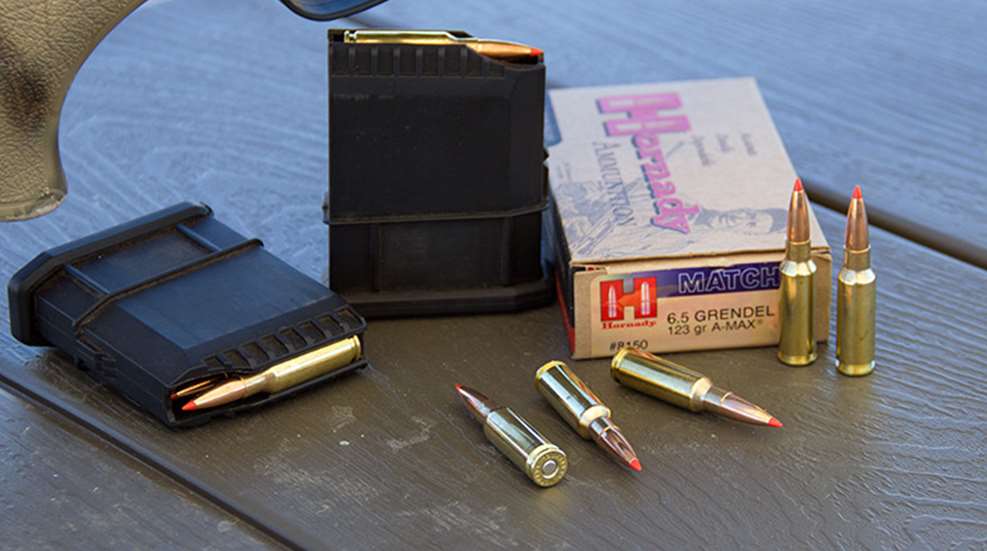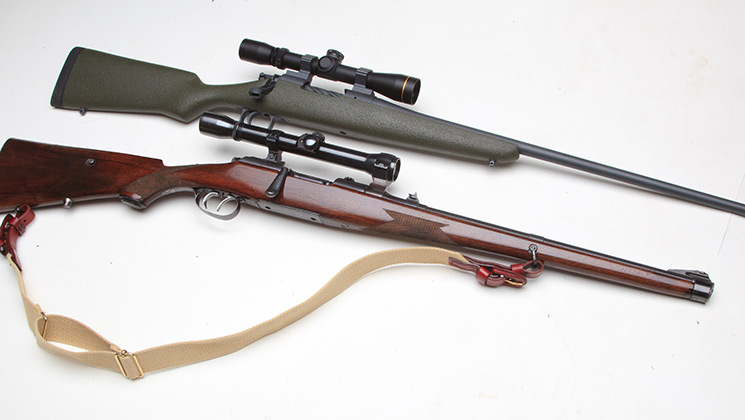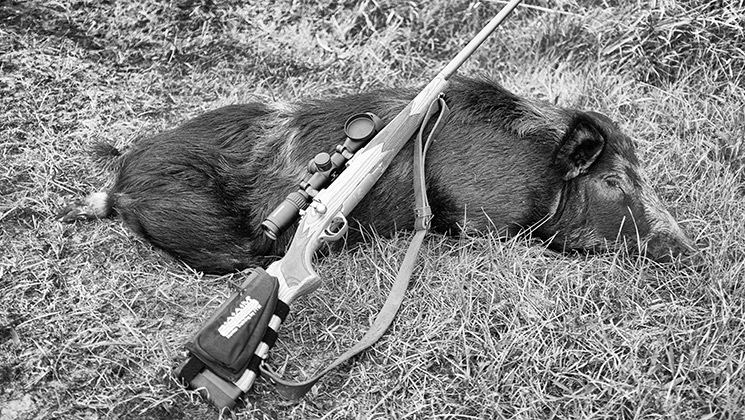
Not everything that comes over from Europe catches on in the New World. We didn’t like monarchies much and rail travel isn’t popular outside of the compact and crowded Eastern Seaboard. With the exception of the 7mm, we Americans haven’t been crazy about metric-caliber rifle cartridges, either. That is starting to change when it comes to the 6.5mm rounds, though, and it’s a good thing. The medium velocity 6.5s deserve a place in the American Hunter’s arsenal as some of the most effective and useful cartridges in existence.
Perhaps the hottest cartridge in North American right now is the 6.5 Creedmoor. The cartridge has introduced an entire generation of shooters to the virtues of a long, stable bullet fired at moderate velocity. The Creedmoor has earned a reputation as an accurate and deadly cartridge that is easy to shoot, thanks to its low recoil, and tremendously effective on game (probably because it is so conducive to effective bullet placement). Americans, for the most part, are a bit late to the party on the cartridge, though. The wonderful 6.5s have been around for decades, and hunters across the globe have come to appreciate their virtues.
There’s no need to cover every 6.5mm cartridge in history, but there are a few that certainly warrant mentioning. The first is the cartridge that probably taught the world about the effectiveness of small bore hunting cartridges, the 6.5 Mannlicher-Schonauer (6.5x54mm). Originally chambered in the 1903 Mannlicher-Schonauer carbine, one of the finest hunting arms ever produced, this round used a long 160-grain round nose bullet at a muzzle velocity of 2,450 feet per second. Introduced during a time when the challenge of increased penetration was met by adding more lead, cordite, or black powder to the equation, this rifle must have been a Godsend to hunters accustomed to heavy rifles and massive recoil. The penetration afforded by it’s advanced (for the time) bullet construction and high sectional density led to its use on game up to and including elephant. Part of its success clearly came from its lack of recoil and the newfound popularity of riflescopes, both of which allowed hunters to place their shots with precision. Common sense (and game laws) dictate that this is no longer an ethical elephant cartridge, but it’s hell on just about any non-dangerous game that walks the Earth and I wouldn’t hesitate to use it on a leopard. My own 1903 carbine gets used every fall.
The 6.5x55mm or, 6.5 Swedish, actually pre-dates the 6.5 M-S but I would argue that its emergence as a truly worldwide hunting cartridge came later. Nonetheless, it is another example of a tremendously effective hunting cartridge that gets the job done without excessive recoil or drama. Developed in 1891 as a military cartridge for Sweden’s Mausers, this cartridge has endured for well over a century and is still commonly chambered today. One of the reasons for its endurance is the fact that a 140-grain bullet at around 2,900 fps is the right medicine for the vast majority of big game hunting situations. Not only is that velocity sufficient for taking game at common hunting distances with minimal bullet drop, it is slow enough to allow the cup and core bullets designs used during most of the last century to work effectively. I’m pretty sure it’s a rule that when you mention the 6.5x55mm, you must mention that Swedes commonly hunt moose with the cartridge. This anecdote is used to establish that, despite having a smaller bore diameter than the .270, the 6.5 can be enough gun for all but the largest of game. The 6.5 Swede is sort of a ‘tweener' cartridge, too long to be correctly used in a short action but not long enough to fully take advantage of a long action: it is perhaps best suited for intermediate-length Mauser actions.

The 6.5-06, though legitimized as a SAAMI cartridge by A-Square in 1997, is essentially still a wildcat. I am unaware of any factory rifles chambered in the 6.5-06 cartridge, nor do I know of any major ammunition manufacturers who load for it. That said, a cartridge that can propel a 120-grain bullet at 3,200 fps and a 140-grain at 2,900 fps without excessive pressure is probably worth handloading for. I have no personal experience with the 6.5-06 (I have a plan in the works to build one on a 1909 Mauser) but a close friend has used it on everything from sheep to elk and swears by it. With the bullets that we have available to us these days, the extra velocity afforded by this long action cartridge is useful— particularly in open country, the 120-grain Barnes TSX and 140-grain Nosler Partitions are both devastating on game at these velocities.
Here we are, more than 100 years after the two most prolific 6.5mm hunting rounds were developed and we are awash in newly-designed 6.5mm cartridges. The .260 Rem., 6.5 Creedmoor and, to a lesser extent, the 6.5x47 Lapua, are all factory-loaded 6.5mm rounds being chambered in both production and custom hunting rifles. These cartridges often produce a bit less velocity than some of the other examples that we mentioned (around 2,600-2,800 fps with a 140-grain bullet), but do so while burning minimal amounts of powder. Their long necks and shoulder geometry beg to shoot tiny groups and they fit on short actions, making them great for light and handy hunting rifles. These cartridges evolved, primarily, due to the long range shooting craze when shooters realized that a high BC bullet with light recoil is a recipe for hitting one’s target. When cartridges become popular due to practical use rather than marketing, we are probably onto something.
Though I own two rifles chambered in .260 Rem., my current favorite is the 6.5 Creedmoor. With the 260, the designers did a good job of adapting the .308 Win. to 6.5mm but, to design the Creedmoor, Hornady’s engineers started from scratch to build the best cartridge they could. Some shooters doubt that inherent cartridge accuracy is a viable concept. I won’t debate the merits of that argument here but I can say that every rifle that I’ve tested in 6.5 Creedmoor has been exceptionally accurate: all have shot better than MOA and the majority have shot .5 MOA or better at 100 yards and beyond. Just this week, I fired a custom 6.5 Creedmoor with 130gr. Prime Match+ ammunition and shot a 3” group at 840 yards. My personal hunting limit is about half that distance, under most conditions, but its a good demonstration of the capability of the round.
Well over a century after 6.5mm cartridges were introduced to the world, American hunters and shooters are finally embracing them in significant numbers. With premium hunting bullets, I wouldn’t hesitate to use these 6.5mms on anything but the largest of game animals. We know that bullet performance and placement are what kills game: the high sectional density of long 6.5mm bullets allow them to penetrate deeply and the light recoil of these cartridges is conducive to making ethical hits. I’m not ready to start ordering beers by the liter, but metric cartridges such as the various 6.5mms bring real performance to the table.






































